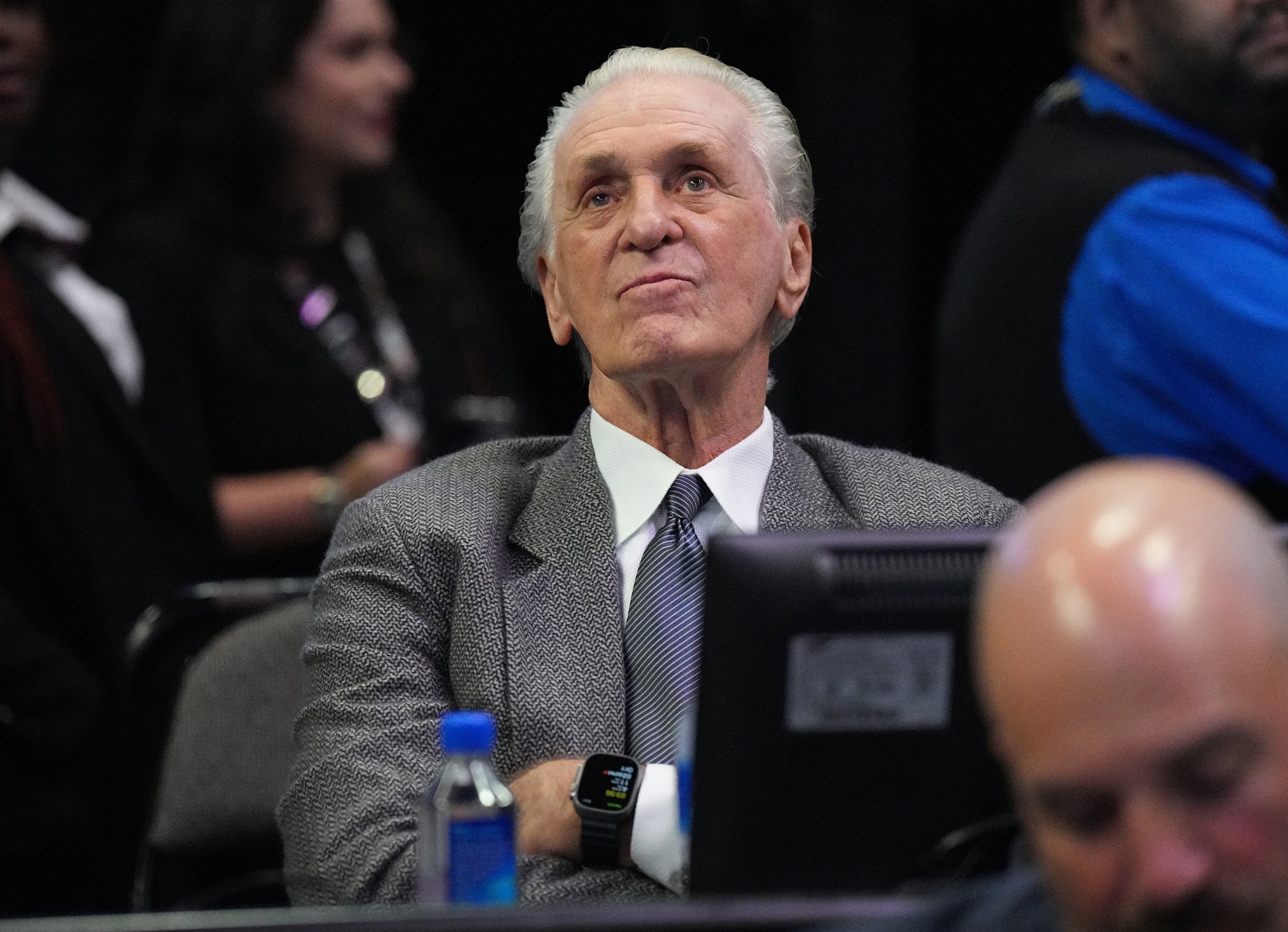In the high-stakes world of professional basketball, the NBA draft is a pivotal moment for franchises. Drafting is a critical pillar of success, yet the league has contrasting narratives on how to do it. The San Antonio Spurs’ remarkable 22-season playoff streak underscores the importance of intelligent draft selections.
In stark contrast, the Sacramento Kings’ 16-season playoff absence highlights the repercussions of misguided drafting. However, impactful draft picks like De’Aaron Fox and Tyrese Haliburton propelled the Kings’ resurgence. The latter helped secure the current franchise pillar, Domantas Sabonis. This intricate interplay between drafting acumen and team success underscores the pivotal role of the NBA Draft for teams’ long-term prospects.
Mastering the Draft: Crafting NBA Success Through Personnel Prototypes
Challenges are aplenty on the path to success. Navigating these waters requires a keen understanding of player evaluation and team building. One such crucial aspect is the concept of personnel prototypes. These are essentially blueprints that define the ideal characteristics and skill sets for each position on the court. These prototypes have played a significant role in the success of many NBA franchises.
For example, a point guard prototype might include exceptional ball-handling skills, court vision, and decision-making abilities. In contrast, a center prototype might prioritize rim protection, rebounding, and low-post scoring. Personnel prototypes explore the fundamental principles and strategies that underpin successful draft selections.
The prototypes are essential because they define ideal attributes for NBA positions (height, athleticism, and specialized skills). Next, having set standards and traits for all players provides consistency in drafting philosophies. A prime example is the Spurs, which consistently selects high-character, team-oriented players. These prototypes also allow teams to focus on specific aspects as NBA positions demand certain skills.
However, using these prototypes as a guide and not a rigid rule is essential. Successful NBA teams adapt drafting strategies to match roster needs and strategic shifts. For instance, the Golden State Warriors, known for their ‘Splash Brothers’ era, emphasized perimeter shooting in their drafting strategy. Evaluation criteria for NBA prospects include skills, physical attributes, and intangible qualities like work ethic and fit within team systems. Finally, while prototypes guide drafting, recognizing exceptions like Victor Wembanyama and Giannis Antetokounmpo can lead to game-changing acquisitions.
Importance of Prototypes
Prototypes include the physical attributes, skill sets, and playing styles deemed optimal for each position on the court. For instance, point guards should demonstrate exceptional ball-handling skills, court vision, and decision-making abilities, which enable them to orchestrate the offense and create scoring opportunities for their teammates.
Conversely, centers usually have imposing statures, rim protection, rebounding, and low-post scoring ability. All traits that anchor the team’s defense and provide a presence in the paint. By understanding these prototypes, teams gain insights into the qualities necessary for success at each position. This streamlines the evaluation process and provides a structured framework for identifying prospects with the requisite tools to excel professionally.
However, while prototypes offer a valuable blueprint for talent assessment, it’s essential not to follow them mindlessly. The NBA is a league defined by constant evolution. Playing styles, strategies, and positional roles evolve. As such, teams must also demonstrate flexibility in their approach to drafting. Deviations from the prototype may yield unexpected results in unique skill sets or unorthodox playing styles.
Ultimately, the importance of prototypes lies in their ability to provide a foundation for talent evaluation, offering teams a structured framework to assess prospects and make informed decisions in the pursuit of championship success.
Consistency in Philosophy
The hallmark of enduring success in the NBA lies in franchises’ commitment to consistent drafting philosophies. Look no further than the Spurs. For decades, the Spurs have adhered to a distinct plan, prioritizing high-character, team-oriented players who embody the values of selflessness and dedication. This approach has translated into on-court triumphs and cultivated a culture of excellence throughout the organization.
Similarly, the Oklahoma City Thunder, Denver Nuggets, and Memphis Grizzlies have formed identities of their specific player archetypes that align with their organizational ethos and strategic vision. Whether it’s the Thunder’s emphasis on athleticism and versatility, the Nuggets’ penchant for skilled and high-IQ players, or the Grizzlies’ commitment to physicality and defensive prowess, these franchises have remained dedicated in their pursuit of players who embody their core values.
This consistency extends beyond roster construction; it creates a sense of continuity and cohesion that serves as the bedrock of sustained competitiveness. By fostering a shared identity and collective purpose, these teams transcend individual talent, forging bonds that endure through triumph and adversity.
Consistency in drafting philosophy is vital in an era of rapid roster turnover and seismic shifts in league dynamics. The guiding force steers franchises through the ebbs and flows of the NBA landscape, anchoring them to a legacy of excellence that transcends time.
Positional Skills and Critical Factors
At the core of the NBA draft process lies an evaluation of positional skills and critical factors that delineate success on the hardwood. Each position demands a distinct skill set and attributes carefully scrutinized by teams seeking to bolster their rosters. For guards, precision in shooting, adeptness in playmaking, and defensive acumen are indispensable qualities that can tip the scales in favor of a prospect.
Beyond these tangible skills, intangible qualities such as basketball IQ, competitive drive, and coachability assume heightened significance. They serve as discerning factors that separate elite prospects from the rest of the field. Meanwhile, a different set of tasks aligns with forwards and centers.
The modern game demands versatility from these positions, emphasizing rebounding, rim protection, and perimeter defense. Success in the NBA often hinges on the ability of forwards and centers to excel in these facets of the game, as they form the backbone of a team’s defensive strategy and provide crucial support on the offensive end.
Furthermore, the integration of analytics has introduced a new dimension to talent evaluation, with teams leveraging advanced metrics to gain insights into a player’s impact on both ends of the floor. As such, the drafting process transcends mere statistical analysis, encompassing a holistic assessment of a player’s skill set, character, and growth potential.
By meticulously evaluating positional skills and critical factors, NBA teams endeavor to secure the foundational pieces necessary for sustained success in the highly competitive landscape of professional basketball.
Adapting Philosophies
While consistency in drafting philosophy forms the bedrock of NBA franchises, the landscape of professional basketball is marked by constant evolution. In an era defined by the rise of pace-and-space basketball, characterized by an emphasis on three-point shooting and positional versatility, teams had to change their drafting strategies accordingly.
Identifying and prioritizing players capable of thriving in this fast-paced, perimeter-oriented style of play is paramount.
The Golden State Warriors are an example of a franchise whose adaptability led to contention. Their transformation from a mediocre team to a dynasty was underpinned by drafting players tailor-made for their system. Indeed, the Warriors’ success underscores the need for flexibility in personnel decision-making.
Teams must constantly recalibrate their approaches to align with shifting trends and roster dynamics. This dance between steadfast philosophy and adaptive ingenuity lies at the heart of sustained success in the NBA, a theme we will explore further below.
Evaluation Criteria
Player evaluation directly leads to success in the draft. Many teams use multifaceted approaches that go beyond on-court skills. NBA teams exhaustively scrutinize prospects, not only on their basketball abilities but also their character, work ethic, injury history, and potential.
This assessment extends past game statistics, requiring teams to seek aspects of a player’s persona. Interviews, background checks, and pre-draft workouts serve as tools in this evaluative process, offering valuable insights into a player’s readiness to navigate the challenges of professional basketball.
For instance, a prospect’s character and work ethic can provide crucial indicators of their capacity for growth. At the same time, a thorough examination of their injury history enables teams to gauge their durability and long-term viability.
By conducting these evaluations, teams strive to minimize risks and maximize their chances of unearthing hidden gems. This thorough process shows the gravity and complexity of talent assessment in the NBA. Persistent attention to detail and dedication are required to secure the most promising prospects.
Exceptional Players
In the NBA draft, prototypes offer a structured framework for evaluating prospects. It’s crucial to acknowledge the existence of outliers. Players such as LeBron James, Kevin Durant, and Luka Dončić have defied traditional categorizations throughout the league’s history.
These players represent more than just statistical exceptions; they embody a seismic shift in the perception of positional norms. They challenge conventional scouting wisdom and reshape the game’s very fabric. Their transformative impact extends beyond individual accolades, influencing the trajectory of their respective teams and even the league.
From revitalizing struggling franchises to propelling championship contenders to new heights, these outliers serve as catalysts for innovation and evolution within the NBA. Recognizing and capitalizing on such exceptional talent requires keen observation and a willingness to challenge preconceived ideas.
Pursuing game-changing players as teams navigate the draft should serve as a guiding principle—a relentless quest for excellence and innovation in talent acquisition strategies.
Drafting Successes and Failures
Additional insights into the NBA drafting landscape, as reported by Brayden Gerrard in a 2021 article, shed further light on the correlation between drafting success and on-court achievements. Notably, the Toronto Raptors, Los Angeles Lakers, Spurs, and Miami Heat emerge as standout performers in drafting, each securing at least one championship during the period under scrutiny.
This underscores the pivotal role of effective draft strategies in propelling teams to championship glory.
Conversely, the struggles of the Kings, Dallas Mavericks, and Los Angeles Clippers highlight the challenges posed by subpar drafting practices, often hindering a team’s competitiveness and championship aspirations.
In conclusion, drafting for personnel prototypes in the NBA represents a delicate balance between adhering to established norms and embracing innovation. By prioritizing consistency in philosophy, player evaluation, and adaptability to trends, franchises can position themselves for sustained success in the ever-evolving landscape of professional basketball.
Gerrard’s work showed that this is effective, as three of the four best drafting franchises all have a framework within which they seek out players: the Raptors (lanky and athletic players), the Spurs (high-IQ), and the Heat (Heat Culture). As the NBA draft continues, mastering the art of drafting personnel prototypes remains paramount for teams aspiring to victory.






